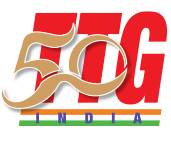Hari Ganapathy, co-founder of Pickyourtrail, discusses the company’s plans to expand its offline stores to build consumer confidence and reach deeper into India’s non-metro markets, as well as the evolving trends in outbound and domestic travel
 You have recently opened offline stores in markets like Chennai, Kochi and Vapi. How are these stores helping you to expand your presence in the country?
You have recently opened offline stores in markets like Chennai, Kochi and Vapi. How are these stores helping you to expand your presence in the country?
I think holidays are a very emotional purchase. Here, you don’t get a physical asset after you make a transaction. Holiday purchase is about good memories. So, one key aspect of establishing physical stores is that consumers get a sense of security when they see a store. They have the confidence that if there is an issue, they can walk up to the store.
On the other hand, we have noticed that tier-II markets in the country still rely a lot on word of mouth. So, we have an audience in tier-I cities where we are able to reach through digital platforms. However, consumers in non-metro cities are still hesitant to make a purchase decision online. Today the non-metro cities in India like Kochi, Ludhiana and Chandigarh have the right airline infrastructure in place. There are a lot of direct flights from these cities into global markets such as South-east Asia and the Middle East, making the growing demand in non-metro cities integral to our expansion plans.
Are you looking to add more offline stores into your portfolio?
We are opening more offline stores in destinations like Chandigarh and Bhubaneswar. We want to get to 15 stores by the end of this financial year. We already have eight stores across the country. I believe adding more stores is the easiest thing to do but you need to make the venture profitable for the store partner too. While you expand you have to also ensure that both the brand and the experience is not diluted. We are very sure that once we get to 15 stores, we will reach 50 at a much faster rate. I think that if stores are making money, more and more partners will reach out to us organically.
What differentiates Pickyourtrail from other holiday companies in the country?
I think one of the key differentiators is that we offer a completely tech-enabled solution. It helps our store partners to cater to customer demands in a much more seamless and quicker fashion. We focus on offering the best in the industry customer experience. This has helped us to grow our referral and repeat business. The big travel brands have been doing this business for a while. We are asking ourselves how we use technology to deliver better economies of scale, better efficiencies and therefore better return on investment for our store partners.
Are there some specific travel segments you are focusing on or travel trends being noticed? Which are the outbound destinations in high demand at present?
Our focus has been on segments like families and honeymooners. We are also seeing a big uptick in seniors travelling. Besides the outbound market, we have recently forayed into the domestic tourism segment. Corporate travel is also another priority area. In terms of destinations, Vietnam is doing really well in the last 12 to 14 months. Japan continues to be a big crowd puller over the last 15 months. Travellers who have been to the Middle East a number of times are exploring different destinations like Oman. Obviously, there are popular traditional outbound destinations like Europe and Australia.
Travellers are now booking slightly earlier to secure better value. Previously, the average booking window – the time between booking and departure – was around 30 to 32 days, but it has now extended to 40 to 43 days. This shows that people are realising the benefit of planning ahead, as early bookings often come with better price advantages. In Europe, for example, many travellers book their holidays nearly three months in advance before departure. I believe India will gradually follow this trend, with more people booking 60 to 90 days in advance. Consumers are also increasingly taking shorter breaks rather than only one long holiday.
How have global conflicts happening in the Middle East, Russia-Ukraine war and the recent India Pakistan skirmishes impacted the outbound demand from the Indian market?
Travel is known to be a very vulnerable industry, affected by everything from geopolitical changes to natural calamities. For example, during the India-Pakistan skirmishes earlier this year, travellers did put their plans on hold. However, even post-pandemic, we have seen that people may pause, but they do not stop. Demand tends to return multi-fold once the situation stabilises.
How are you seeing tourism boards in India helping to grow outbound tourist arrivals from India?
I think most tourism boards we work with have either already shifted or are in the process of shifting their focus, recognising that visas remain the biggest bottleneck for Indian travellers. Over the last 18 to 24 months, several destinations have taken steps to ease this challenge, some by offering visa-on-arrival facilities and others by introducing multi-year visas. For example, the Philippines recently introduced visa-on-arrival; Japan has simplified its visa process; Vietnam offers visa-on-arrival, Australia started issuing multi-year visas, and Dubai now provides multi-year visas too. This marks a significant shift towards making travel more accessible for Indians.
In addition, we are seeing tourism boards move away from generic global campaigns and instead invest in India-specific campaigns. They are also allocating resources to train the travel trade. Earlier, it was sufficient to promote standard itineraries, but today’s customers, empowered by the internet, are often as knowledgeable, if not more so, than the travel partners themselves.











